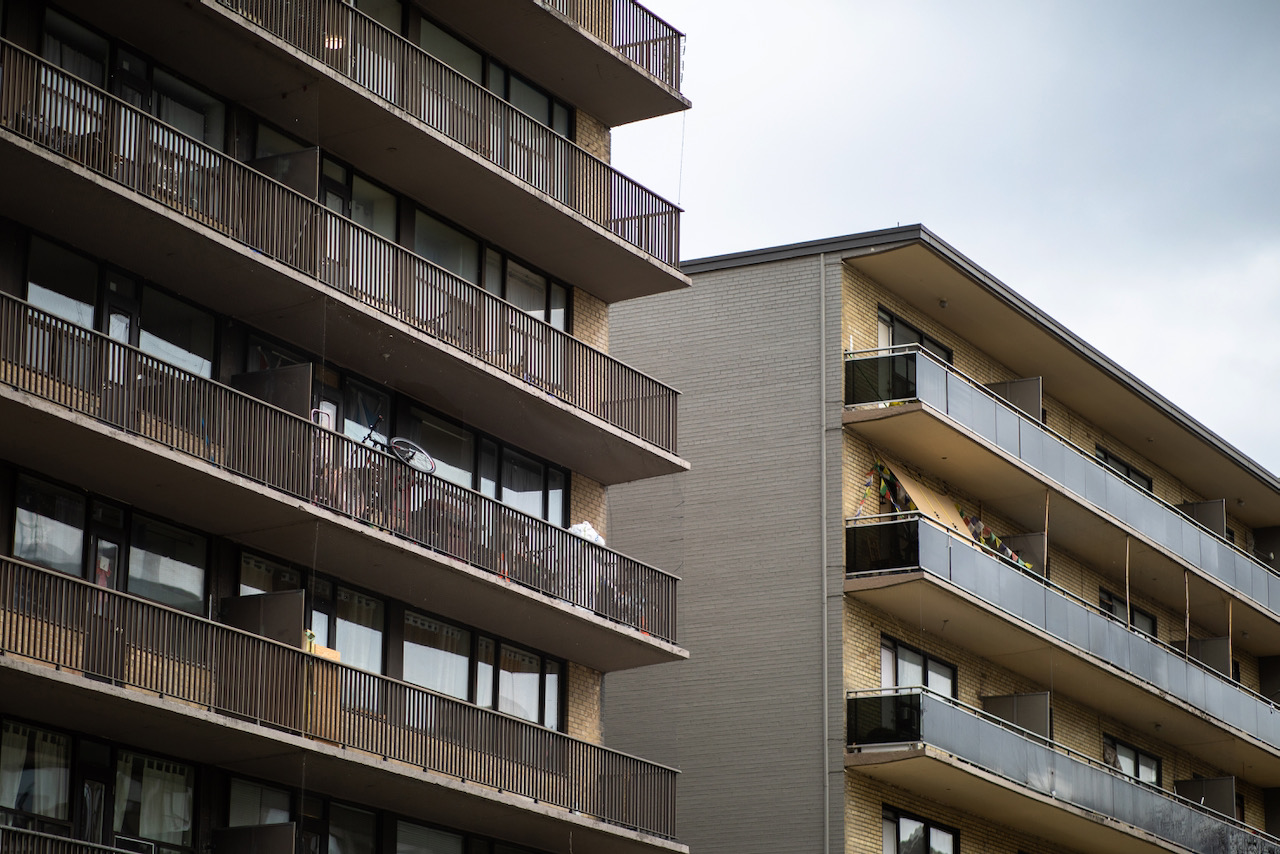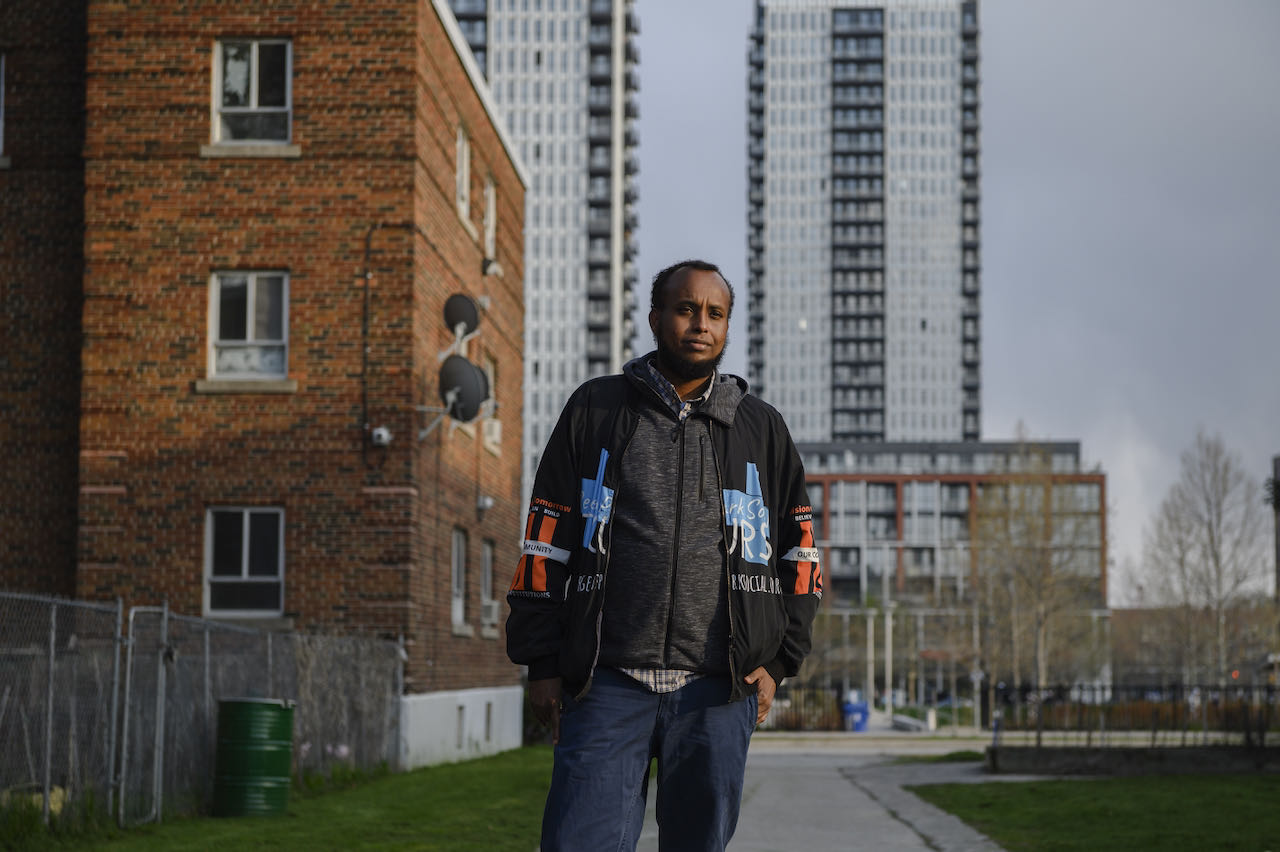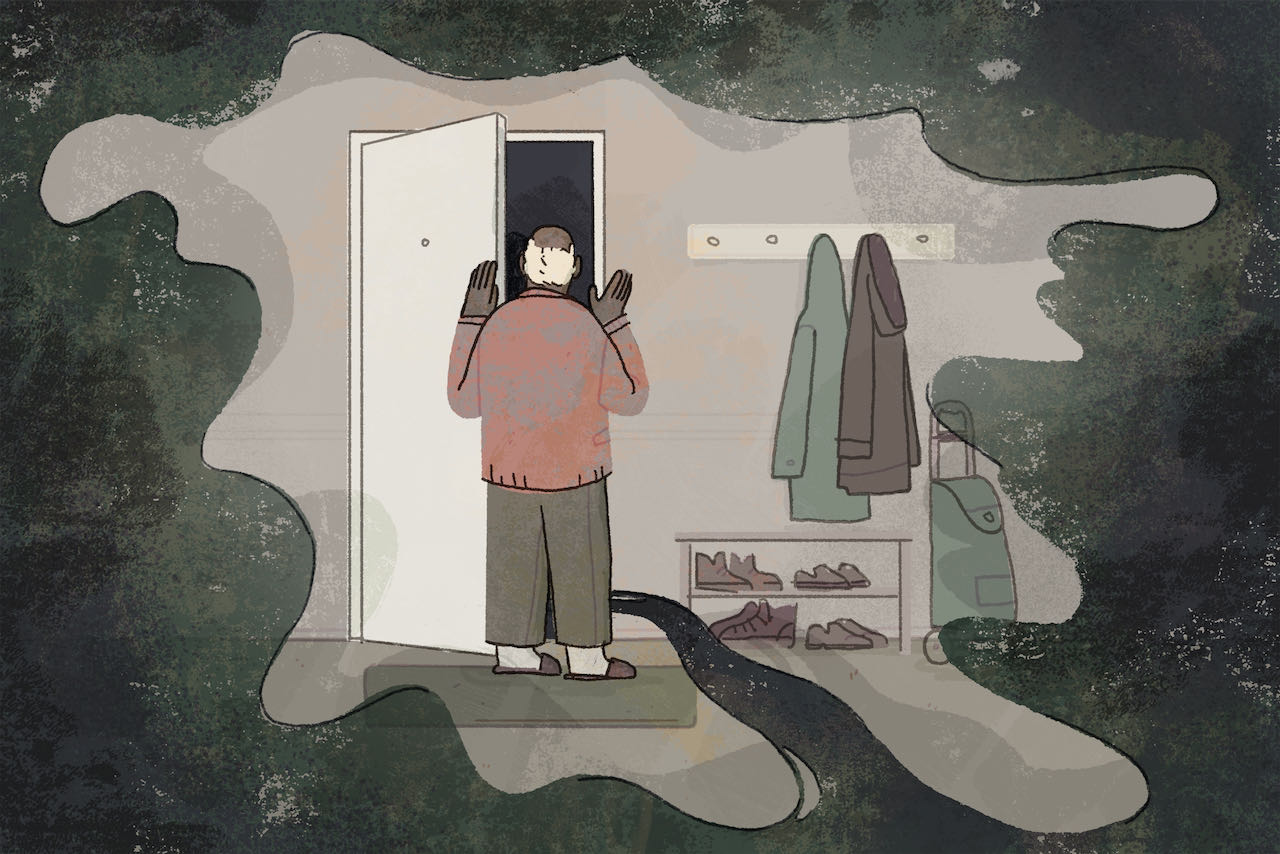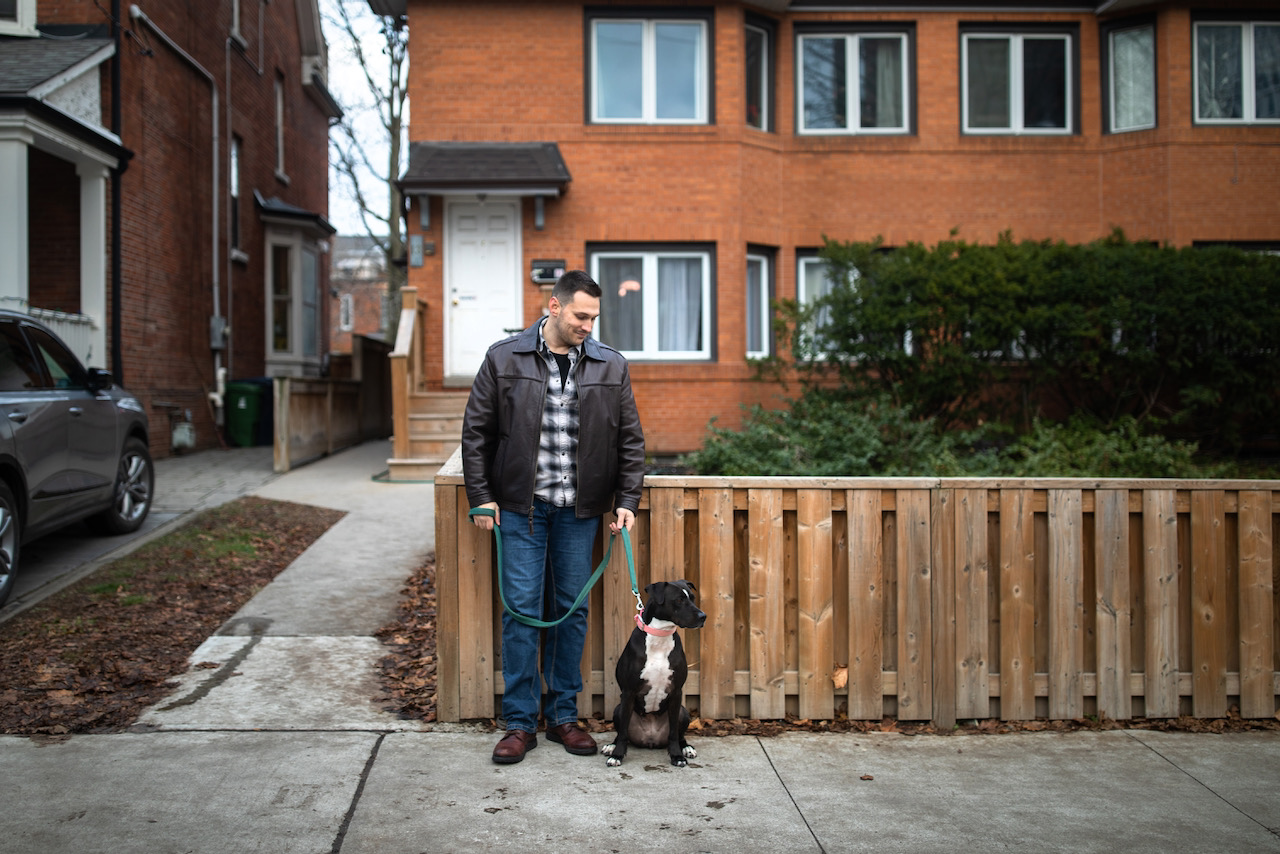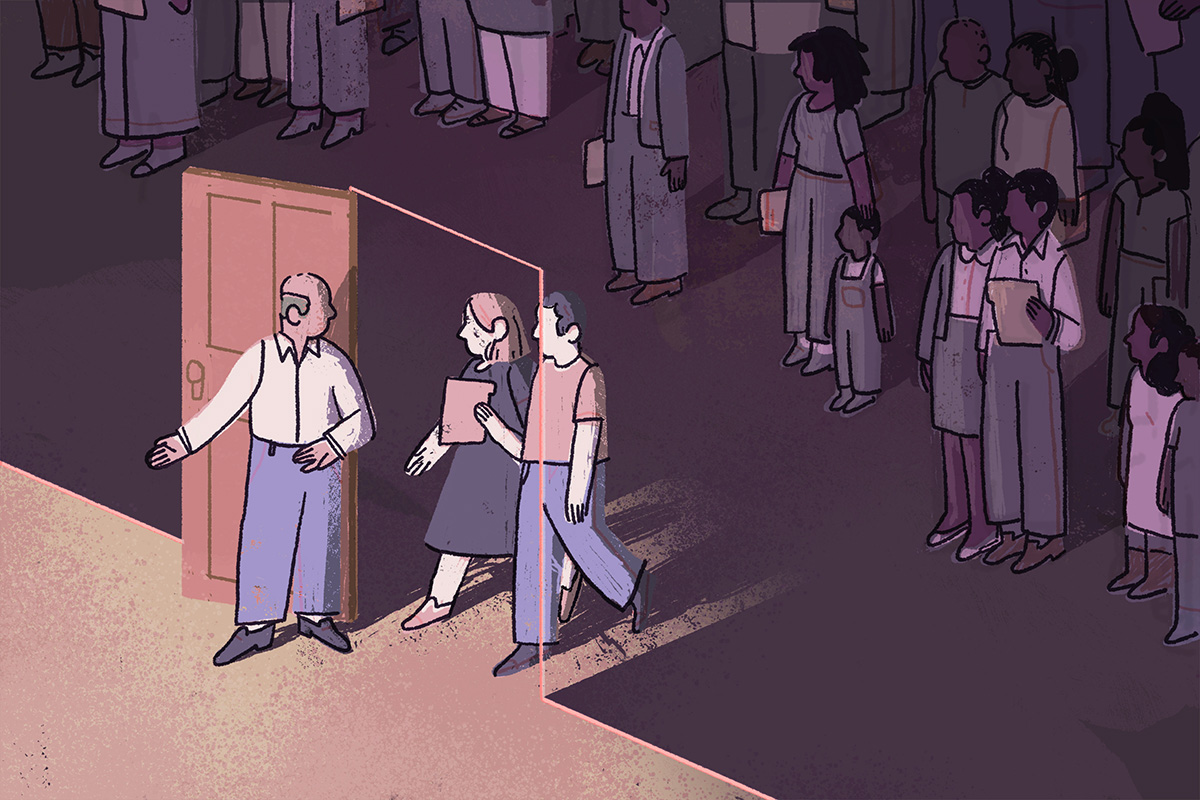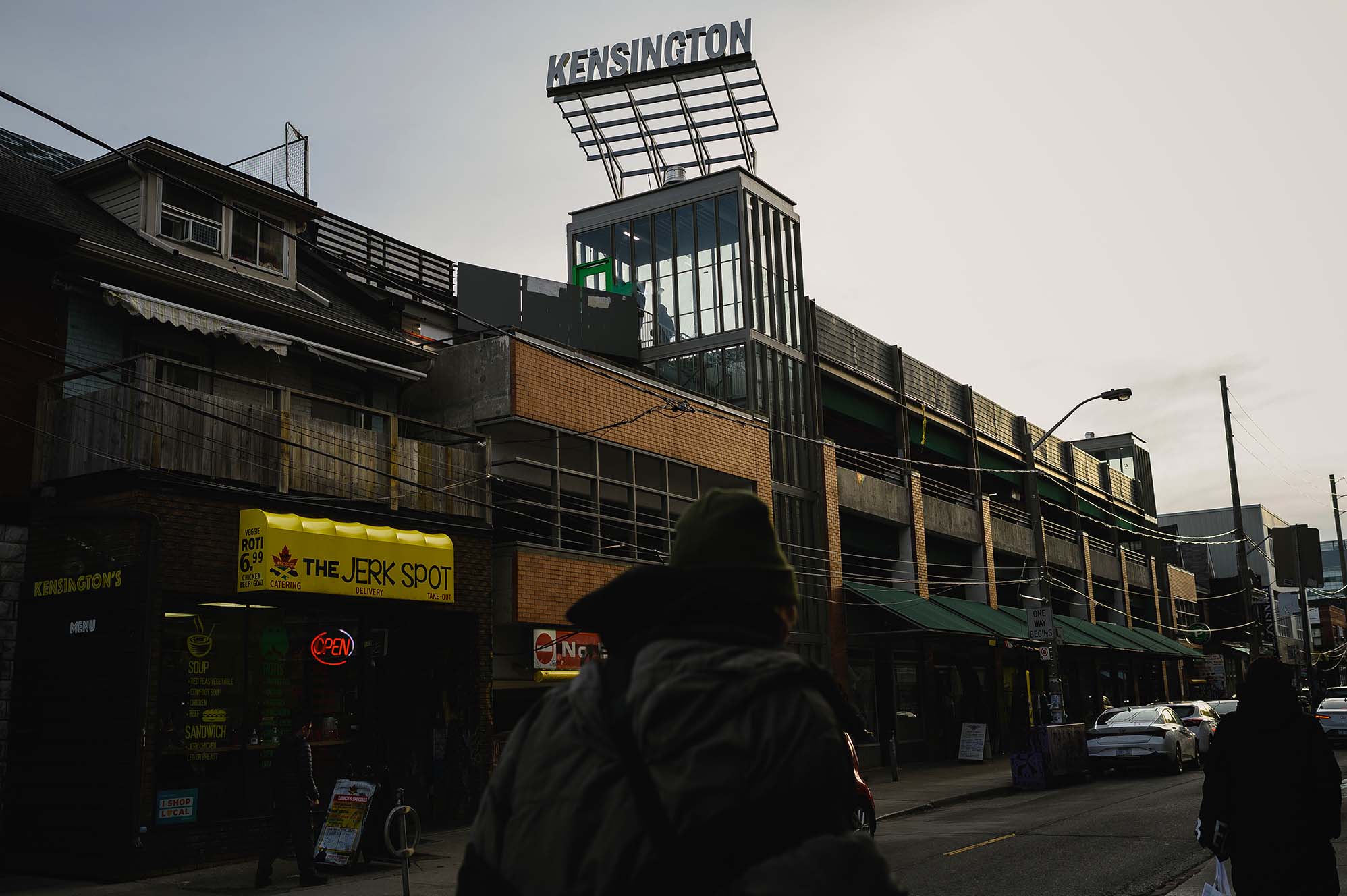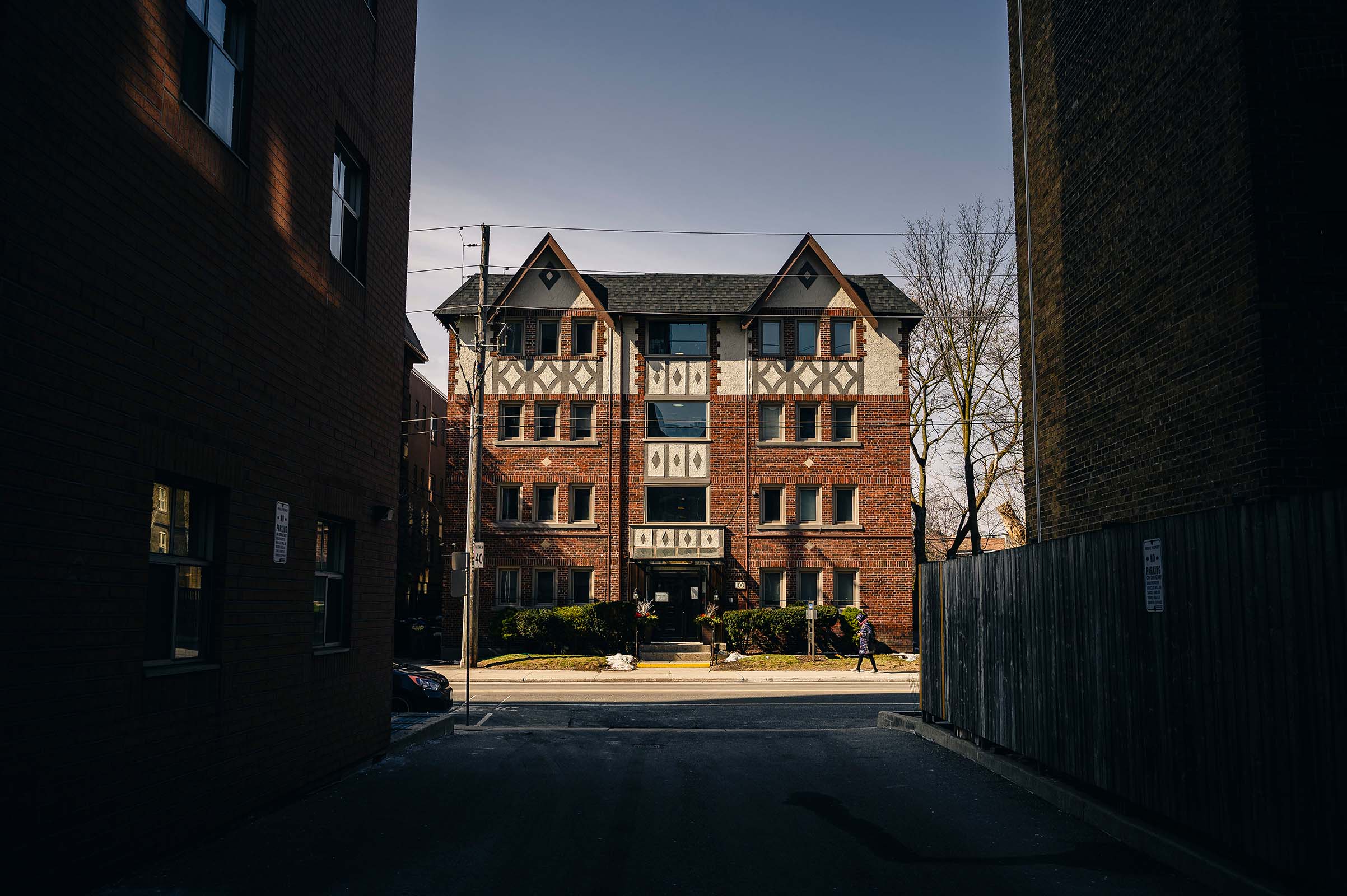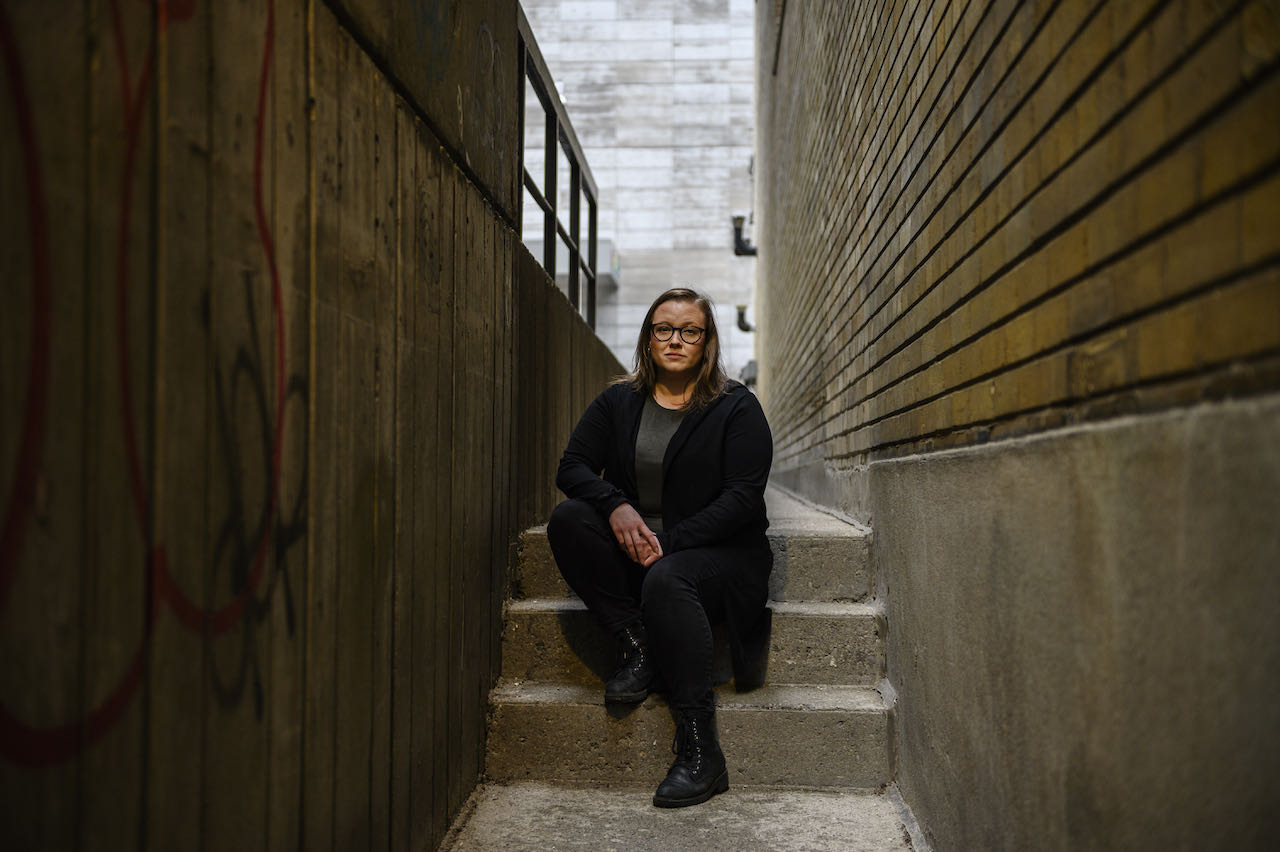
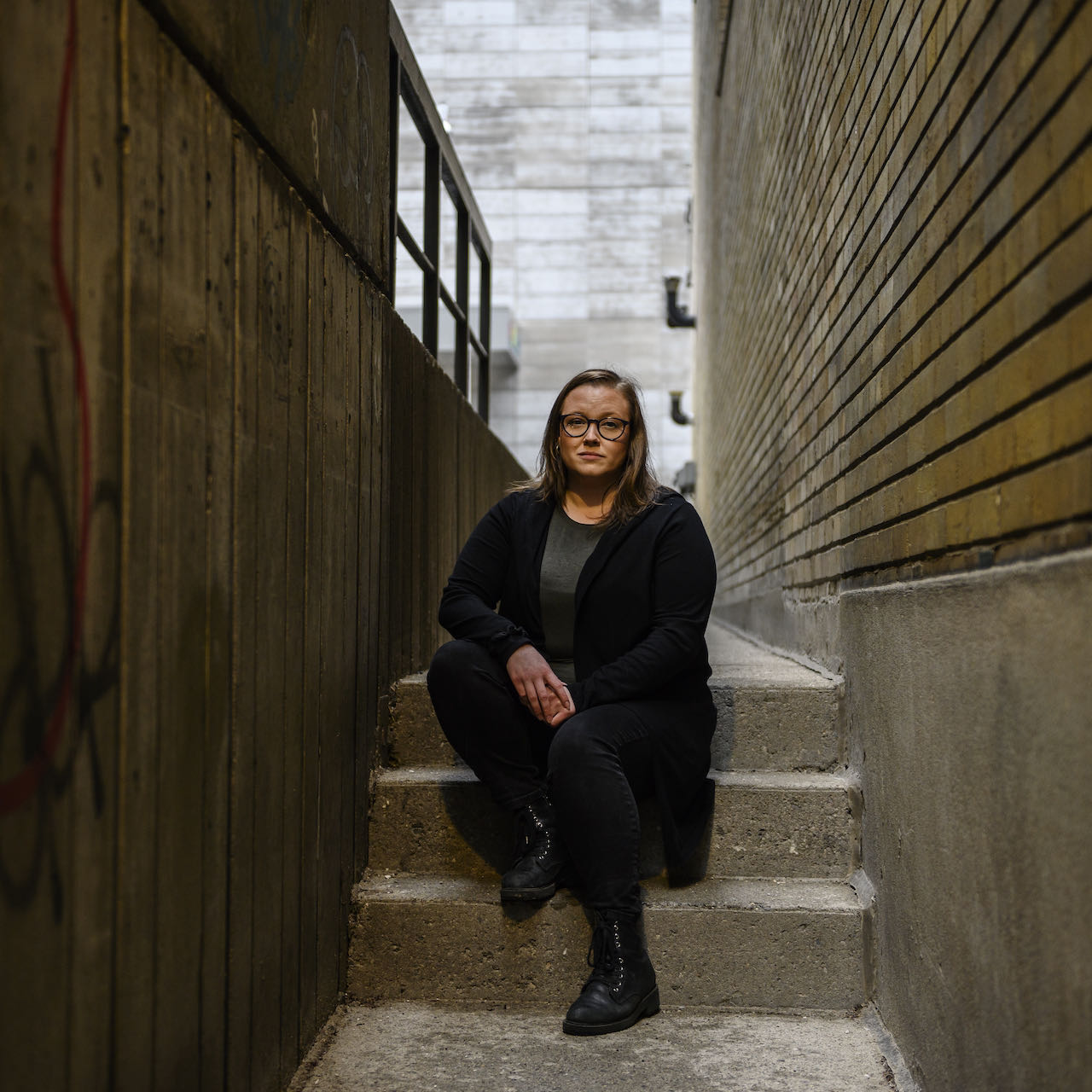
Madison McElroy’s workdays never look the same. As a housing support worker, some days she’s meeting with a client who lives on the street. Others, she’s at a social assistance office, or helping a client file their income tax. She could be on the phone at her Bay and College Street office, speaking with a client experiencing a mental health crisis. Or, she’s negotiating with a landlord in the hopes of finding a safe and affordable rental. There are dozens of steps that McElroy needs to help her clients through before even approaching the hurdle of finding an affordable unit.
McElroy, 29, works as a case manager with the short-term mental health program at Fred Victor, a Toronto-based social service organization dedicated to helping homeless and low-income people find secure housing, employment, and health care. It employs 43 staff in housing support roles like hers, and operates two emergency shelters, five affordable housing sites, and a transitional housing program. McElroy has been at Fred Victor for four months; before this, she worked in housing support at the Salvation Army, one of a number of organizations providing these services across the city.
Housing support workers like McElroy are doing the job at a time when the city’s shelters are at capacity and the affordability crisis rages on. In 2022, approximately 8,200 people were staying in Toronto’s shelter system every night, and this year, an average of more than 100 people were turned away every night from the city’s emergency central intake line. Amidst this, McElroy’s job is to find housing for those who need it most, and who face the greatest obstacles in doing so.
In the process, she works to provide stability in countless aspects of her clients’ lives. Without regular paycheques, the prospect of signing a lease wanes. Without a phone or laptop, job-hunting becomes a distant glimmer on the horizon. And all of that occurs after the first, seemingly insurmountable hurdle: obtaining medical care or support for substance use or mental health crises. Each challenge magnifies the next. In order for someone experiencing homelessness to attain stable housing, almost every loose end in their lives must somehow be addressed.
“When I started my role as housing worker, I really just fell in love with giving people hope and giving people a chance to try again.”
A person experiencing homelessness in Toronto will likely not have a fixed address or a computer. It’s a vicious cycle: without those two things, their odds of securing a place to live are infinitely worse. And sometimes, it’s even more basic—McElroy often walks clients through the process of obtaining birth certificates and photo ID, accessing services like Neighbourhood Link’s Partners for Access and Identification project. “Things get stolen, things get lost,” says McElroy. “You’re asking people who don’t have access to computers—they may be lucky enough to have a phone that works—to get all these things done.”
As they navigate the lengthy processes of securing documentation and opening bank accounts, clients are often in actively dangerous situations. “You’re faced with the fact that people are living outside or they’re homeless,” says McElroy. “Health can also be a huge factor.”
Deqa Farah, Fred Victor’s director of housing access, says that many of the organization’s housing access and support programs have specific criteria for eligibility, including having active substance use and mental health challenges, being on the street or precariously housed, coming from emergency departments or hospitals, or have recently spent time in the the criminal justice system.
The reality of these complex needs is that housing access workers are helping clients connect with doctors, file their taxes, meet with psychiatrists, and much more. They spend hours training clients on how to answer questions in a housing interview. “It’s even to the point where we might take [a client] to Value Village and buy them clothing that can be presentable when they go to a housing interview,” says Farah.
Join the thousands of Torontonians who've signed up for our free newsletter and get award-winning local journalism delivered to your inbox.
"*" indicates required fields
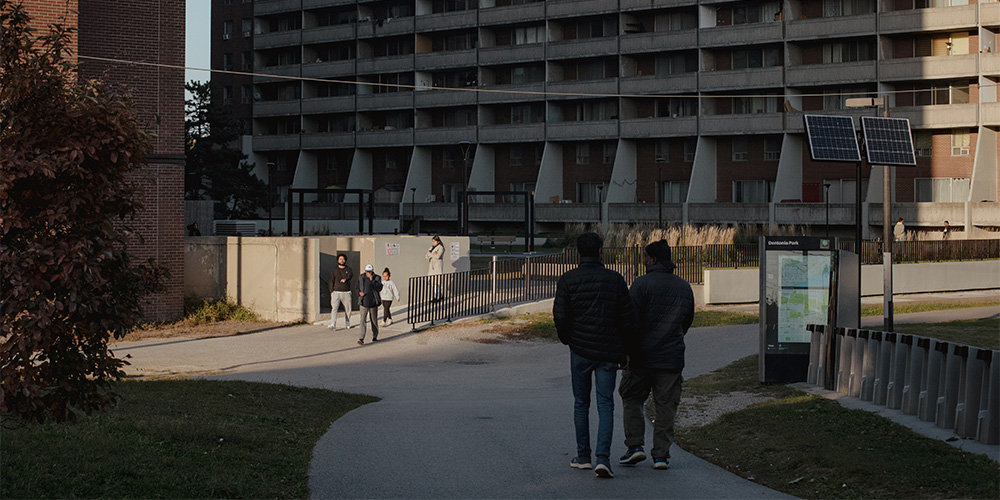
Toronto’s rental market is notoriously constricted: it’s the country’s second-most expensive rental market, with the average listed rent for a one-bedroom at $2,500. For someone experiencing homelessness, the barriers are almost endless. “The [affordable] market is nonexistent,” McElroy says. “Shelter benefit portions haven’t changed in years, and it doesn’t make up for the fact that rent keeps increasing.” In the ten-year period between 2011 and 2021, Ontario Works shelter benefits (funding offered by the province to subsidize housing for those in financial need) increased by 7 percent. Meanwhile, the average market rent for a one-bedroom increased by 51 percent.
When a client experiencing homelessness is referred to McElroy, her first step is to check if they’re on any affordable housing waitlists. As of 2023, there are nearly 85,000 people on Toronto’s social housing waitlist—a wait that can take decades. “A lot of people, when they talk to me, they say, ‘Oh, I’ve already spoken to a housing worker. They told me it’s ten years, there’s nothing that they can do for me,’” says McElroy. While that could be true in many cases, she finds it frustrating that many people experiencing homelessness are made to believe that this is their only option. “How do we know that, unless we’re looking at their files and we’re looking at how long they’ve been in the system?”
During the pandemic, the city implemented a choice-based housing program available to agencies by invitation, primarily for people who are experiencing chronic homelessness. “I’ve successfully housed quite a few people off of that… However, from what I’ve noticed, you really need to have a worker who’s willing to work with you on it.”
If the waitlists are fruitless, McElroy turns to the private market, searching online and meeting with landlords in-person. There is a housing subsidy her low-income clients can access if they’re renting through the private market called the Canada-Ontario Housing Benefit. “The tricky part with that is that you have to be homeless for three months. So, again, there’s a lot of providing proof [of] homelessness.”
Since the pandemic, the homelessness rate has skyrocketed, while housing availability has worsened.“It’s heartbreaking because people are so unwilling to provide housing,” says McElroy. “Housing that could have been provided for people who are experiencing homelessness are now going to people like me. That is, the basements, one-bedrooms, the studios, the very small nooks and crannies, even those are difficult to get.”
The first time McElroy called a landlord, she faced an unforeseen obstacle; landlords were often only amenable because they thought she was the tenant. Again and again, she experienced a rapid about-face. The implication that she was a social worker, or the barest mention of social assistance, resulted in dial tones. “They changed their minds on a dime,” she says. “I wouldn’t put anything on speakerphone [in front of clients], because I hated hearing a lot of the biases that would just come out of people.” Some calls only lasted ten seconds.
Her colleagues have faced similar hurdles. In 2021, a Fred Victor housing support staff member was in the process of speaking with a landlord: they’d scoped out a private market unit within budget, and were at the property discussing terms with the landlord on behalf of their client. Things seemed favourable; then, the housing worker gave the landlord a business card. Later, the landlord let them know that things had changed. “They googled us, and they were like, ‘Oh, so that means the person must have an addiction, because you work with the homeless population,’” says Farah.
Over time, McElroy learned that it might be better to have clients call landlords themselves, spending hours rehearsing questions and answers. Still, her journey with that first client remained an uphill battle. “I must have called at least 20 people on a weekly basis,” she says. “A lot of it was me just calling on my own at one point because he just couldn’t take the rejection anymore, and I didn’t blame him.”
Staff at Fred Victor also help ensure that clients pay rent, and often negotiate with the landlord themselves. In some situations, the client holds the lease—in many others, Fred Victor actually holds the lease. “Some of our clients, for example, don’t have credit, they haven’t had income for a long time, and their income might be very limited…They might be on Canada Pension Plans, or they might be on ODSP, or on welfare,” says Farah.
But sometimes, it’s not about money—it’s about perception. If someone is not presenting according to the landlord’s standards, they often get rejected. “[The landlord] isn’t going to openly discriminate against them, but they’re not going to get housing,” says Farah. “So in those situations, we have a model where we actually negotiate with the landlord…We’re the leaseholder, and then we rent to [the client].” In time, once a client is able to establish credit and get settled, the lease can be transferred to them.
But as rent continues to rise and landlords become increasingly selective, Toronto’s housing market is closing like a vise, shutting out clients experiencing homelessness from finding somewhere to live. “I would say it feels a lot harder to engage with landlords, and to be heard. I think the rejection rate feels higher… there’s a lot of bias and stigma towards homeless people,” McElroy says, which is further complicated by racism and other forms of discrimination. “I’ve found I’m getting a lot more pushback from landlords.”
“The landlord system isn’t really regulated,” she adds. “So it’s a lot of ‘I can say yes and no to whoever.’ It’s kind of like a bidding system, and it can be very challenging for people who are regularly rejected.”
The organization takes on the responsibility of ensuring that once housed, a client stays housed. Support workers like McElroy spend time developing individual plans to help clients address their challenges and needs: securing employment, maintaining budgeting, and mapping out the new communities they live in. Often, they look at the root causes that led someone to experience homelessness, including addiction, mental health issues, or abuse, and provide preventative support around those concerns. If issues arise with the landlord, they mediate and work to prevent evictions.
But even with staff members taking that responsibility, landlords are quick to deem the clients undesirable. A major component of her role then, McElroy says, is weathering rejection on behalf of her clients. “I prefer to get the rejection over my clients, because my clients have received so much rejection through the systems that they’ve been in.”
“The question is, why is there not enough space, and where are these people going? How long are they able to survive like that?”
In 2022, there were 187 reported deaths of people experiencing homelessness. But as Toronto’s homelessness crisis worsens, decision-makers still turn to solutions that deprioritize long-term support. Early this year, the Shelter and Housing Justice Network released an open letter to city council calling for answers to the dire situation faced by people experiencing homelessness in the city—expanded warming centre capacity, the reinstatement of respite spaces, and an end to the long-standing evictions of encampments and destruction of survival gear. Without alternatives, they wrote, people in Toronto were being forced to ride subways, overnight buses, and sleep in TTC stations and emergency rooms.
But a Board of Health proposal to expand warming centre hours and keep them open 24/7 was rejected by city council. Around the same time, a rise in safety incidents on the TTC was met with over 80 police officers placed in the transit system, creating a hostile environment for the people experiencing homelessness who turned to the TTC for warmth and shelter, some of whom were forcibly removed from buses and streetcars, leaving them stranded at a time when shelters were already at capacity.
McElroy sees housing access and support programs offered by agencies like Fred Victor as highly beneficial in offering immediate assistance, shifting people away from long-term waitlists. “At the same time, I think more needs to be done,” she says. The work done by case managers like McElroy is just one thread in a much broader tapestry. It can’t just be up to people like her, or organizations like Fred Victor—finding each client housing takes time and effort, and meanwhile, people have immediate needs. “We’re at capacity for shelters, we’re at capacity for warming centres,” she says. “The question is, why is there not enough space, and where are these people going? How long are they able to survive like that?”
And even within her own role, questions remain for policymakers. McElroy wonders how much funding social services will receive, and what will be done to regulate the other half of the housing equation: landlords. The city, she thinks, is in need of a “new plan as a whole,” that encompasses all these dimensions. Without it, things can feel unstructured. “There’s no fair game to housing anymore,” she says.
In McElroy’s current role, she’s worked with at least 40 people so far. She sees herself in this line of work for the rest of her life. Alongside her full-time job, she’s completing a bachelor of social work at Toronto Metropolitan University to complement her existing diploma. “When I started my role as housing worker, I really just fell in love with giving people hope and giving people a chance to try again,” she says. “I’m looking at someone who could be me one day, and I want to be able to provide them with the best service possible…We want to give them something to hold on to, a reason to keep going.”
Finding someone housing can take anywhere between a month and a year. “Can I say it’s an easy success rate? No. Can I say it’s worth trying? Yes,” she says. “You have to be okay with getting the rejection, and knowing that housing will come.” And against the odds, it often has.
Early in McElroy’s case management work, the city’s new choice-based housing list came into effect. But she noticed how the online form was often bypassing people who needed it most, from older people to those living outside.
“I noticed that a lot of people weren’t getting housed through this [system],” she says. She set to work doing the outreach to change that: walking through the online process with people in her office, scheduling remote meetings, and assembling documentation. Through this alone, McElroy ended up housing ten people. “We were able to get quite a few people out of a shelter that they’d been in for five-plus years.”
For McElroy, this experience was a turning point. “It was the first time I was able to see so many people get housed at once.” Because clients saw others being housed, it sparked the desire to work through the process themselves. “And it didn’t feel like a dead end. It gave people some hope that they could be next.”
Our Rent Series is made possible through the generous support of Maytree. All stories were produced independently by The Local.


